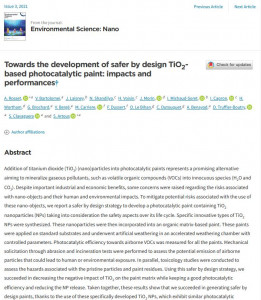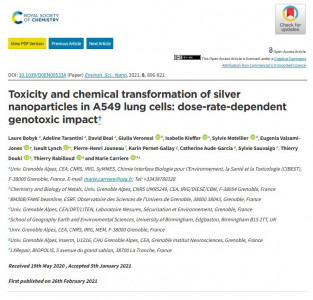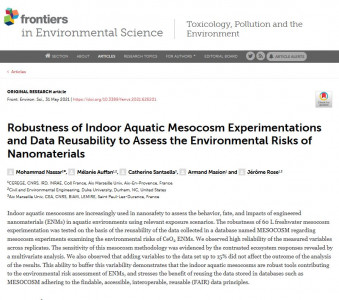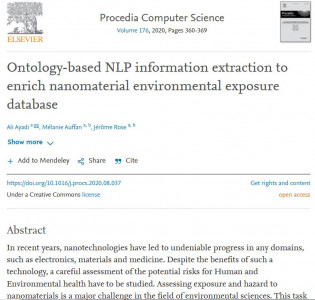Article on "Unexpectedly High Levels of Organic Compounds Released by Indoor Photocatalytic Paints" Gandolfo, A., Marque, S., Temime-Roussel, B., Gemayel, R., Wortham, H., Truffier-Boutry, D., ... & Gligorovski, S. (2018).
Abstract:
Photocatalytic paints based on titanium dioxide (TiO2) nanoparticles represent a promising treatment technology for cleaning the air at our dwellings. A few studies have shown that instead of elimination of harmful indoor air pollutants the production of carbonyl compounds occurs from the photocatalytic paints. Herein, we report unexpectedly high concentrations of volatile organic compounds (VOCs) released upon irradiation of photocatalytic paints which are meant to clean the air at our dwellings. The concentrations of the VOCs were measured continuously and online by PTR-ToF-MS (Proton Transfer Reaction-Time of Flight-Mass Spectrometry) connected to a well-established flow tube photoreactor. The PTR-ToF-MS analysis revealed the presence of 52 ions in the mass range between 20 and 490 amu, among which 43 have been identified. In particular very high emission rates were estimated of two relevant indoor air pollutants, formaldehyde and acetaldehyde as 355 μg h–1 and 257 μg h–1 for 1 m2, respectively. We suggest a detailed reaction mechanism responsible for the production of these harmful indoor air pollutants (formaldehyde and acetaldehyde, among the others). The hydroxyl radicals (OH) formed upon activation of TiO2, react with the organic constituent (butyl acrylate and vinyl acetate) of the paint binder lead to generation of an important number of organic compounds. We demonstrate that the TiO2 quantity and the organic content of the binder is of paramount importance with respect to the formation of VOCs, which should be considered for future optimization of this air remediation technology based on TiO2 nanoparticles.









